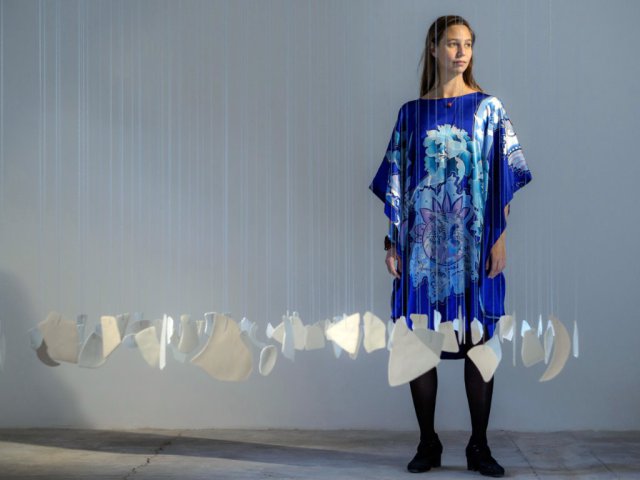
Kate Moore, ©Marco Giugliarelli for the Civitella Ranieri Foundation
On Saturday 2 December the Australian-Dutch composer Kate Moore (1979) will receive the Matthijs Vermeulen Prize for her composition The Dam. The prize was established in 1972 and consists of € 20,000, made available by the Performing Arts Fund. It is named after the Dutch composer and music critic Matthijs Vermeulen (1888-1967).
Until now it has invariably gone to men, some of them even getting it twice. Moore will receive the prize coming Saturday as the first woman ever, during Festival Dag in the Branding in The Hague. After the ceremony in the Korzo Theatre, her piece will be performed by ensemble Herz.
Kate Moore combines repetitive patterns with an opulent sound world. This summer she surprised friend and foe with her oratorio Sacred Environment during the Holland Festival Proms in the Amsterdam Concertgebouw. The large-scale work for orchestra, choir, soloists and live video was inspired by the sacred grounds of Australia’s first people.
The at times overwhelming masses of sound evoked memories of Carl Orff’s Carmina Burana. In general Moore’s music is more restrained; it often has a dreamy, seductive atmosphere. She regularly combines instruments with artistic sound objects, which form a subtle but important part of the composition. She also built her own ceramic percussion instruments.
Moore composed The Dam in 2015 for the Canberra International Music Festival, Australia. It was originally set for soprano and chamber orchestra, including a didgeridoo and an electric baritone guitar. Two years later, the British ensemble Icebreaker asked her to make an instrumental version, in which the didgeridoo was replaced by pan flutes; this version was awarded the Matthijs Vermeulen Prize. For the Herz Ensemble Moore made yet another arrangement, in which both didgeridoo and singer are re-instated.
For The Dam, Kate Moore found inspiration in nature: ‘It is based on the rhythms of the sounds made by cicadas, crickets, frogs, birds, flies, spiders and other creatures that inhabit a waterhole in the bush’, she said. ‘Far away from human intervention, their evening song becomes a great choir joyously singing out into the vast universe. It is possible from far away to hear where the waterhole is without being able to see it, and it is also possible to hear the shape of the landscape around it as many tiny creatures create a sonic pointillist landscape. I am attracted to the almost but not quite polyrhythmic tapestry of sound they create.’
The jury calls The Dam ‘both an exciting, immersive composition and a rich sounding of our times. The ultra-soft, mysterious motoric movement with which the work opens, convincingly develops into a grand musical gesture.’ Furthermore, the report lauds the ‘organically woven evocative interplay of lines’. The jury also praises Moore for having the guts ‘to combine an almost monomaniac musical movement with an extremely precise sound performance.’ It concludes: ‘Moore does not want to nuance or soften in her music, but rather touches the listener directly without compromise.’
That afternoon also the Willem Pijper Prize will be awarded, to Moore’s Mexican colleague Hugo Morales Murguía (1979) for his composition Equid (2014). This will be performed by Slagwerk in the Nieuwe Kerk, The Hague. According to the jury report, the piece has a ‘signal function’, because it ‘inspires to listen in a different way to the sounds of everyday life’. The composition prize is curated by the Johan Wagenaar Foundation for the Municipality of The Hague.
Normally Dag in de Branding only lasts one (Satur)day. On the occasion of the 70th anniversary of the Johan Wagenaar Foundation however, an extra concert was added the day after. On Sunday 3 December, the piano duo X88 will give a recital in Korzo featuring four world premieres. The pianists Vicky Chow and Saskia Lankhoorn will perform, among others, Preservation (Pearl Morpho) by Pete Harden and Naked, I by Vanessa Lann.
A complete overview of the two-day festival can be found here.
Here’s a live performance of The Dam by the Herz Ensemble.
Advertisements Share this:






